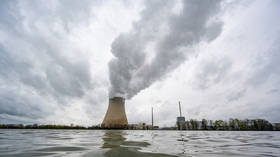Russian researchers find new way to reuse nuclear waste
A method of reprocessing unburned nuclear fuel from spent rods has been tested at Moscow State University
Russian chemists are researching a method that could improve the reprocessing of spent nuclear fuel, Moscow State University has reported. The process involves using a compound that readily binds to uranium, but not other heavy metals contained in reactor waste.
Spent nuclear fuel rods typically contain amounts of uranium and plutonium which can be extracted and processed into new fuel. Other byproducts of nuclear fission include long-lasting radioactive elements, such as neptunium, americium, and curium. They have their own uses and pose a safety risk if buried with the waste.
The nuclear industry uses chemical repossession to extract these actinides – as the elements are collectively known – and other valuable components before spent fuel is sent for long-term storage. However, the process is relatively complex.
The method that Russian scientists are exploring is an alternative to the industry standard and involves an additional phase, during which uranium is removed selectively. Called the GANEX (group actinide extraction) process, it uses a special chemical to extract uranium from nitric acid solutions.
Scientists at Moscow State University’s chemistry department have tested an organic compound derived from phenanthroline for its ability to form ionic bonds with uranium. When switching from lab-simulated spent fuel to what industrial repossession deals with, they found it more efficient than expected.
“The compound can ‘grab’ macroscopic amounts of uranium, and each unit of the extraction agent can link with two units of uranium,” researcher Svetlana Gutorova explained. “One of the particles gets attracted to the positively charged cation part of the complex, and the other one to the negatively charged anion part. With smaller concentrations of uranium in model samples, no team has observed this effect before.”
The team described their research in a paper published in the Inorganic Chemistry magazine earlier this year, and say the efficiency of the phenanthroline derivative in extracting uranium is on a par with the traditional method.
The scientists plan to test similar compounds to see if they could work even more effectively. They hope that a particular chemical could bond exclusively to uranium, and not plutonium, streamlining its reuse in reactors.
You can share this story on social media:








Comments are closed.